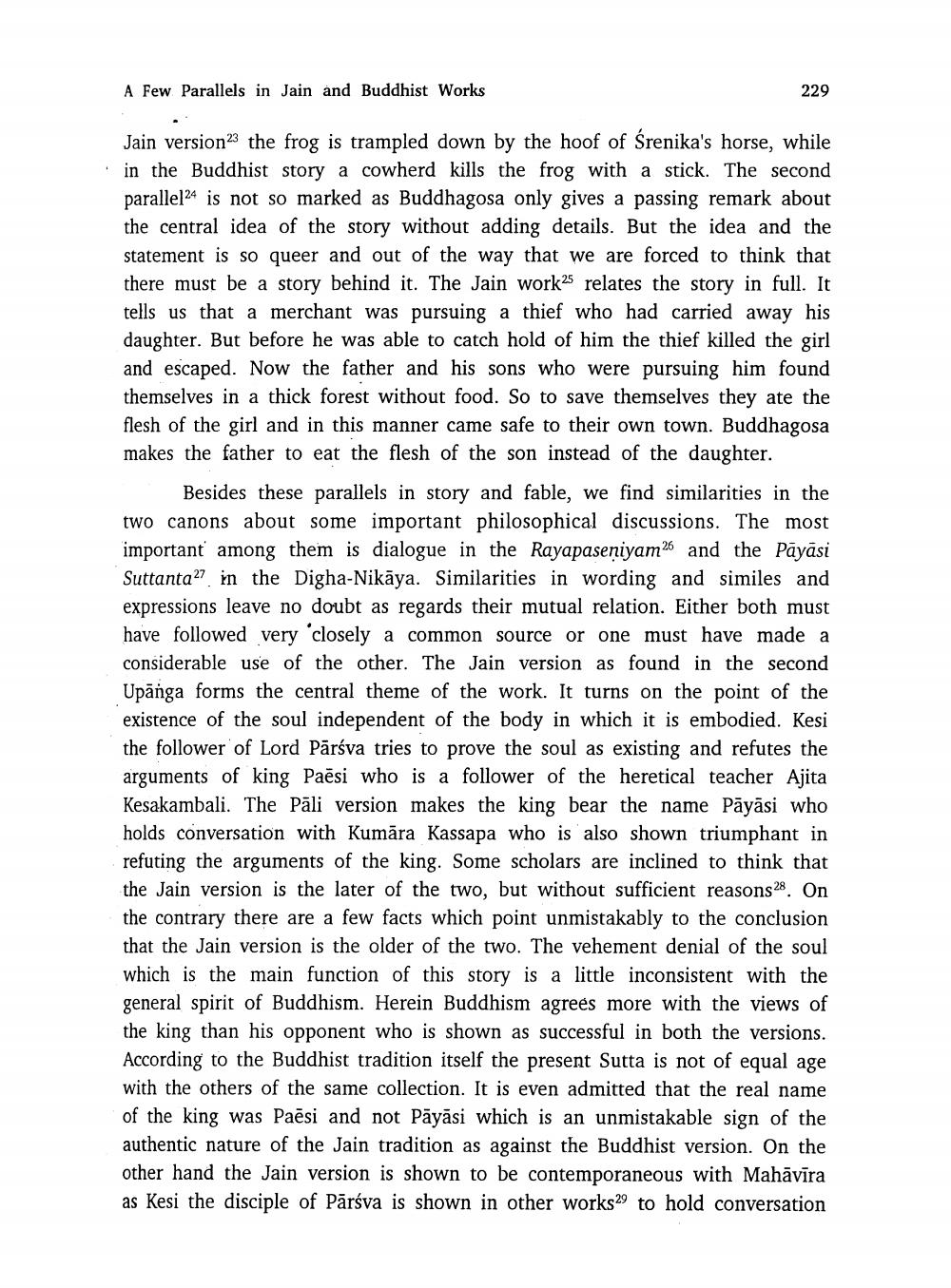________________
A Few Parallels in Jain and Buddhist Works
229
Jain version23 the frog is trampled down by the hoof of Śrenika's horse, while in the Buddhist story a cowherd kills the frog with a stick. The second parallel24 is not so marked as Buddhagosa only gives a passing remark about the central idea of the story without adding details. But the idea and the statement is so queer and out of the way that we are forced to think that there must be a story behind it. The Jain work2 relates the story in full. It tells us that a merchant was pursuing a thief who had carried away his daughter. But before he was able to catch hold of him the thief killed the girl and escaped. Now the father and his sons who were pursuing him found themselves in a thick forest without food. So to save themselves they ate the flesh of the girl and in this manner came safe to their own town. Buddhagosa makes the father to eat the flesh of the son instead of the daughter.
Besides these parallels in story and fable, we find similarities in the two canons about some important philosophical discussions. The most important among them is dialogue in the Rayapaseniyam 26 and the Payāsi Suttanta? in the Digha-Nikāya. Similarities in wording and similes and expressions leave no doubt as regards their mutual relation. Either both must have followed very closely a common source or one must have made a considerable use of the other. The Jain version as found in the second Upānga forms the central theme of the work. It turns on the point of the existence of the soul independent of the body in which it is embodied. Kesi the follower of Lord Pārsva tries to prove the soul as existing and refutes the arguments of king Paēsi who is a follower of the heretical teacher Ajita Kesakambali. The Pāli version makes the king bear the name Pāyāsi who holds conversation with Kumāra Kassapa who is also shown triumphant in refuting the arguments of the king. Some scholars are inclined to think that the Jain version is the later of the two, but without sufficient reasons28 On the contrary there are a few facts which point unmistakably to the conclusion that the Jain version is the older of the two. The vehement denial of the soul which is the main function of this story is a little inconsistent with the general spirit of Buddhism. Herein Buddhism agrees more with the views of the king than his opponent who is shown as successful in both the versions. According to the Buddhist tradition itself the present Sutta is not of equal age with the others of the same collection. It is even admitted that the real name of the king was Paēsi and not Pāyāsi which is an unmistakable sign of the authentic nature of the Jain tradition as against the Buddhist version. On the other hand the Jain version is shown to be contemporaneous with Mahāvīra as Kesi the disciple of Pārsva is shown in other works29 to hold conversation




